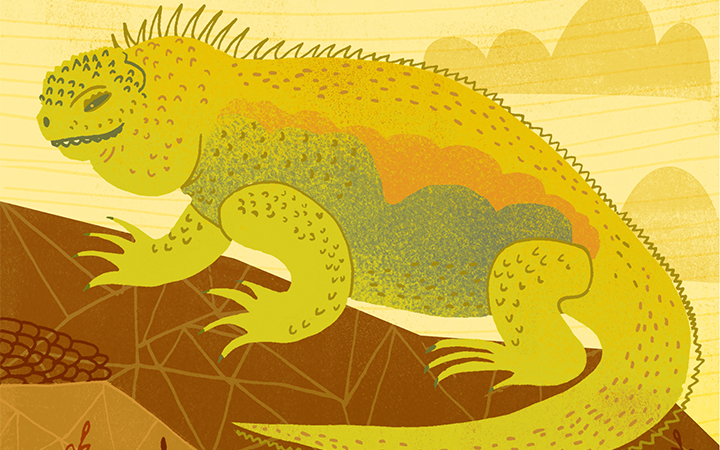Sauropsida

Cuatro Narices
Bothrops asper


Sorry, there is no photo available. If you have one, please submit
here
.
7 POINTS
El Movimiento: 2
Dato: B. asper es nocturna y terrestre, sus crías nacen vivas. Esta especie se identifica por las manchas triangulares en el dorso.
cool, warm
Graphic by Alba Romeraalbaromera.com/

Marine Iguana
Amblyrhynchus cristatus



4 POINTS
Play: The Marine Iguana has a MOVE of 2.
Fact: Darwin was revolted by these creature’s appearance, and referred to them as “Imps of Darkness.”
cool, warm
Graphic by Rachel Ignotofskywww.rachelignotofskydesign.com/
Photo by Andrew Skujinscommons.wikimedia.org/wiki/File:Galapagos_Iguana_02.jpg
The marine iguana (Amblyrhynchus cristatus) is an iguana found only on the Galápagos Islands that has the ability, unique among modern lizards, to forage in the sea, making it a marine reptile. The iguana can dive over 9 m (30 ft) into the water. It has spread to all the islands in the archipelago, and is sometimes […] read more

Galapagos giant tortoise
Chelonoidis nigra



3 POINTS
Play: This tortoise has a MOVE of 2.
Fact: Charles Darwin visited the Galápagos for five weeks on the second voyage of HMS Beagle in 1835 and saw Galápagos tortoises on San Cristobal (Chatham) and Santiago (James) Islands.
warm, hot
Graphic by Robert Ballwww.robertmball.com/
Photo by Daniel Ramirezcommons.wikimedia.org/wiki/File:Galapagos_Tortoise_(5213306875).jpg
The Galápagos tortoise or Galápagos giant tortoise (Chelonoidis nigra) is the largest living species oftortoise and the 14th-heaviest living reptile. Modern giant tortoises can weigh up to 250 kg; even larger versions, now extinct, roamed every continent except Antarctica and Australia into the Pleistocene (<1.8 million years ago). Today, they exist only on two remote archipelagos: […] read more